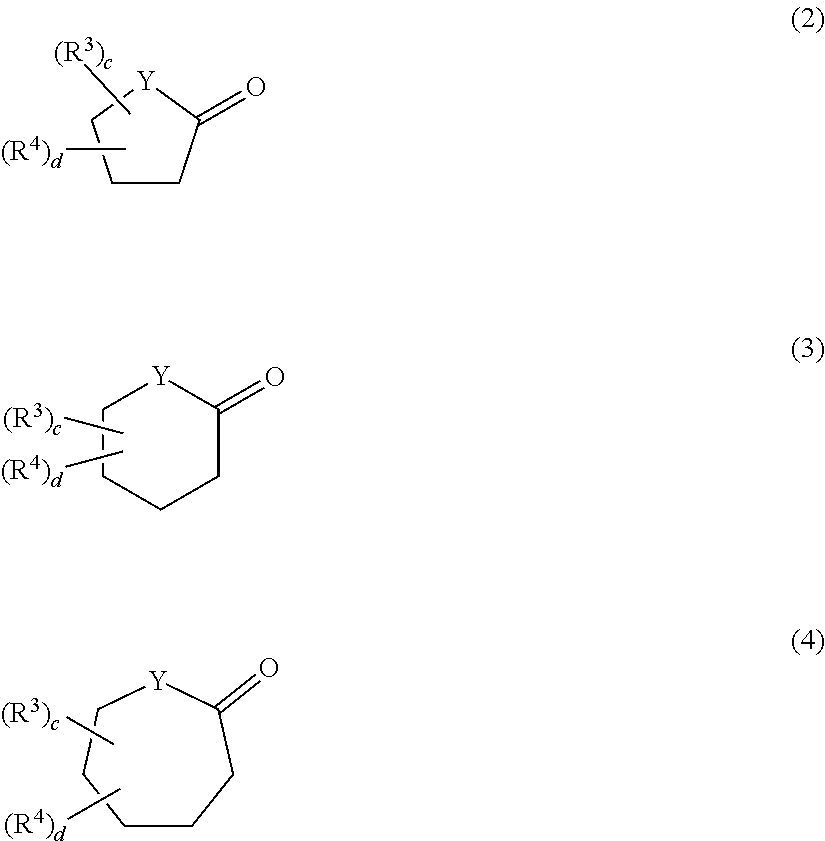Aqueous hair cleansing agent
a hair cleansing agent and water technology, applied in the field of water-based hair cleansing agents, can solve the problems of hair damage, increased friction of hair surface, unpleasant feeling to the touch,
- Summary
- Abstract
- Description
- Claims
- Application Information
AI Technical Summary
Benefits of technology
Problems solved by technology
Method used
Image
Examples
examples
[0102]The present invention will be explained in more detail by way of examples, which are not intended to be limiting of the present invention. In these examples and comparative examples, all designations of “%” indicate “% by mass”, unless otherwise noted. Also, methods for measuring various properties are as follows.
(1) Measuring Method
[0103](i) Method for Measuring the Position of a Double Bond in a Raw Material Internal Olefin
[0104]The position of a double bond in the internal olefin was measured by using gas chromatography (hereinafter abbreviated as GC). Specifically, dimethyl disulfide was made to react with the internal olefin to form a dithionated derivative and then each component was separated by GC. Thus, the position of a double bond in the internal olefin was found from each peak area.
[0105]In this case, instruments used for the measurement and the condition of analysis are as follows.
[0106]GC instrument (trade name: HP6890, manufactured by Hewlett Packard), column (t...
production example a
Synthesis of an Internal Olefin in which the Number of Carbon Atoms is 16 and the Content of a Double Bond at C2-Position is 16.5% by Mass
[0116]A flask equipped with a stirrer was charged with 7000 g (28.9 mol) of 1-hexadecanol (trade name: Kalcol 6098, manufactured by Kao Corporation) and 700 g (10% by mass based on raw material alcohol) of γ-alumina (manufactured by STREM Chemicals, Inc.) as a solid acid catalyst and the mixture was reacted at 280° C. with stirring for 5 hours while flowing nitrogen (7000 mL / min.) in the system. The conversion rate of alcohol after the reaction was finished was 100% and the purity of a C16 internal olefin was 99.7%.
[0117]The obtained crude alkene internal olefin was transferred to a distilling flask to distill at 136 to 160° C. / 4.0 mmHg, thereby obtaining an alkene internal olefin having 16 carbon atoms and an olefin purity of 100%.
[0118]The distribution of double bond in the obtained alkene internal olefin was as follows: C1-position: 0.5% by mas...
production example b
Synthesis of an Internal Olefin in which the Number of Carbon Atoms is 18 and the Content of a Double Bond at C2-Position was 16.9% by Mass
[0119]A flask equipped with a stirrer was charged with 7000 g (25.9 mol) of 1-octadecanol (trade name: Kalcol 8098, manufactured by Kao Corporation) and 1050 g (15% by mass based on raw material alcohol) of γ-alumina (manufactured by STREM Chemicals, Inc.) as a solid acid catalyst and the mixture was reacted at 285° C. with stirring for 13 hours while flowing nitrogen (7000 mL / min) in the system. The conversion rate of alcohol after the reaction was finished was 100% and the purity of a C18 internal olefin was 98.5%.
[0120]The obtained crude internal olefin was transferred to a distilling flask to distill at 148 to 158° C. / 0.5 mmHg, thereby obtaining an internal olefin having 18 carbon atoms and an olefin purity of 100%.
[0121]The distribution of double bond in the obtained internal olefin was as follows: C1-position: 0.7% by mass, C2-position: 16....
PUM
| Property | Measurement | Unit |
|---|---|---|
| Temperature | aaaaa | aaaaa |
| Percent by mass | aaaaa | aaaaa |
| Percent by mass | aaaaa | aaaaa |
Abstract
Description
Claims
Application Information
 Login to View More
Login to View More - R&D
- Intellectual Property
- Life Sciences
- Materials
- Tech Scout
- Unparalleled Data Quality
- Higher Quality Content
- 60% Fewer Hallucinations
Browse by: Latest US Patents, China's latest patents, Technical Efficacy Thesaurus, Application Domain, Technology Topic, Popular Technical Reports.
© 2025 PatSnap. All rights reserved.Legal|Privacy policy|Modern Slavery Act Transparency Statement|Sitemap|About US| Contact US: help@patsnap.com



